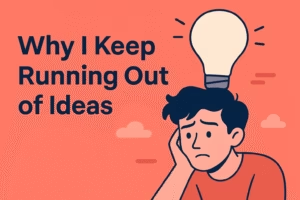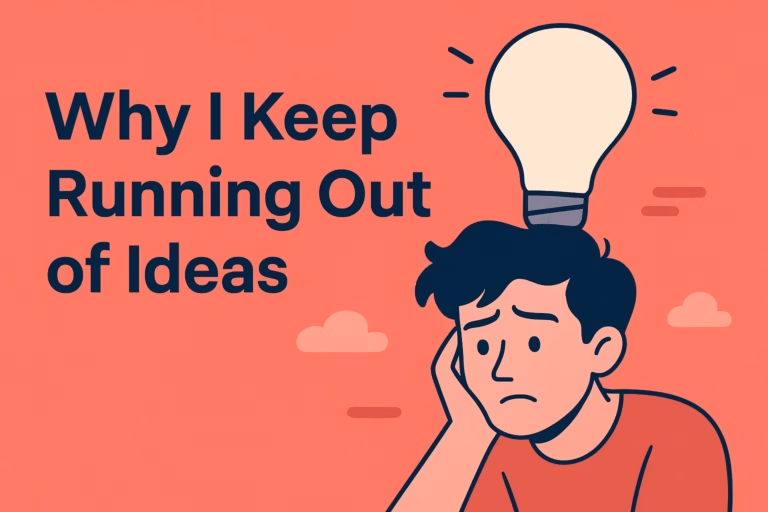Key Takeaways
- Idea droughts come from overconsumption, comparison, and decision fatigue, not lack of talent.
- Refill your tank with real inputs. Mine comments, have short conversations, and consume outside your niche.
- Use the Three Sources Rule. Rework past wins, follow audience behavior, and borrow strong structures with your voice.
- Store ideas in one place so nothing gets lost. Centralization beats scattered notes every time.
- Blaze Autopilot acts as a backup brain by resurfacing proven posts and tagging ideas by theme and tone.
- Creative blocks are feedback. Slow down, reduce inputs, and let systems carry the routine while you focus on meaning.
You open your notes app, stare at the blinking cursor, and feel nothing. No spark, no hook, just static. Yesterday’s post did fine, but today your brain is empty. You start scrolling for inspiration, but everything looks like something you’ve already said. That’s when the panic sets in.
This is the quiet killer of consistency — not laziness, but depletion. You’ve poured so much into your content that you’ve drained the tank. It’s not that you have nothing to say; it’s that your mind is overfed with noise and starved of reflection.
Creators burn out creatively the same way athletes hit fatigue — by never resting between reps. You’ve been consuming trends, analyzing engagement, comparing formats, and somewhere in the process, your natural curiosity got drowned out by optimization.
The good news is that creative droughts don’t mean you’re done. They mean you’ve hit the ceiling of your current inputs. The solution isn’t to work harder; it’s to feed your brain something new and give it permission to wander again.
Next, we’ll break down what’s actually happening in your head when your creativity dries up — and how to flip the switch back on.

Why You Feel Empty
Creative blocks are not mystery events. They are the natural response to repetition and noise. Your brain is built to connect dots, but when it keeps seeing the same dots, it stops caring. Every scroll through recycled trends trains your mind to expect sameness — so when you sit down to create, nothing feels worth saying.
Three main forces cause this kind of emptiness.
First, overconsumption. You are probably watching more than you are writing. When your brain is full of other people’s styles, it forgets your own.
Second, self-comparison. Measuring your output against others turns creation into performance. You start writing for validation instead of curiosity, which kills originality.
Third, decision fatigue. The sheer number of choices — platform, format, caption, thumbnail — wears down the creative part of your brain until all that’s left is exhaustion.
When these stack up, ideas stop feeling exciting. Everything becomes safe, polished, and lifeless. That’s not lack of talent; that’s mental clutter. The only cure is subtraction — less input, less pressure, fewer screens. When you quiet the noise, your thoughts get louder again.
Next, we’ll rebuild from that stillness using a method that reliably refills the tank without chasing trends or forcing inspiration.
The Refill Method
When your mind feels dry, do not go searching for “new ideas.” Search for new inputs. The best creators are not idea factories; they are idea recyclers. They observe more than they invent.
Start by mining your own world. Read your comments and DMs — they are gold. Every question, complaint, or reaction is a seed. Screenshot the good ones and drop them into a folder labeled Future Posts. You could build a month of content from audience pain points alone.
Next, have conversations offline. Creative energy multiplies in dialogue. A five-minute chat with a client, a friend, or a colleague can spark ten content angles because spoken ideas carry emotion. Write down anything that made your brain twitch.
Lastly, widen your diet. Consume content outside your niche. A travel vlog can teach rhythm; a cooking video can teach pacing; a philosophy quote can spark storytelling. Fresh perspectives sharpen your thinking faster than more marketing advice ever will.
You are not running out of creativity; you are starving it. The more you collect raw material from life, the more your brain starts connecting pieces in unexpected ways. That is where your originality lives — not in pressure, but in curiosity.
Next, we’ll turn that curiosity into structure using the “Three Sources Rule.”
The Three Sources Rule
When you hit a creative wall, you do not need to invent. You need to revisit. Every strong creator pulls from three reliable wells — past wins, audience behavior, and borrowed structure.
1. Past Wins
Look through your analytics or pinned posts. The pieces that once took off still hold value because audiences rotate. Most of your current followers never saw them. Rewrite those posts with sharper insights or updated data. Audiences reward repetition when it feels refined, not recycled.
2. Audience Behavior
Pay attention to the small signals — what people save, what they skip, what they comment on without being asked. Those moments reveal interest patterns. If three people asked the same question this month, that is your next headline.
3. Borrowed Structure
Every format you see online — list, question, quote, contrast — can be retooled with your voice. Structure is neutral. Meaning is what you bring to it. Study content frameworks that perform well and inject your story into them.
Below is a quick table showing how these three wells translate into post ideas you can use immediately.
Automate the Backup Brain
Every creator needs a system that remembers what they forget. Great ideas don’t vanish because they’re bad they vanish because they’re untracked. You screenshot something, save a post, or jot down a note in three different apps, then never see it again. That’s the silent leak in every creative process.
This is where Blaze Autopilot earns its place. It works like a second brain for creators. Every time a post performs well, it saves that insight automatically. When you hit a creative dry spell, it resurfaces proven topics, formats, and captions that once worked. You’re not starting from scratch you’re remixing your own best ideas.
You can also tag ideas by tone, theme, or platform so the system can auto-suggest what fits your next campaign. The magic isn’t that Blaze creates new ideas for you; it’s that it prevents old ones from dying in forgotten folders.
The smartest creators don’t create more. They manage less. Automation doesn’t replace inspiration; it guards it from chaos.
Next, we’ll close with a short reflection on why idea droughts are not the end just a pause for recalibration.
Winding Up
Running out of ideas doesn’t mean you’re finished. It means you’ve been pouring without refilling. The best creators don’t chase constant output — they build rhythms that protect creativity from burnout.
Every time you feel blank, it’s not failure. It’s feedback. Your brain is asking for stillness, not more scrolling. When you refill that space with real-world input and smart systems, the ideas return faster, sharper, and more aligned with your voice.
Blaze Autopilot or not, the rule stays the same — your process should serve your mind, not drain it. Capture what works, store what shines, and reuse what still hits. That is how professionals stay inspired year-round while everyone else starts over each Monday.
So the next time you stare at a blank caption box, remember this: you are not out of ideas. You are out of rest. Slow down, listen harder, and let your system do what it was built for — keeping your spark alive.



